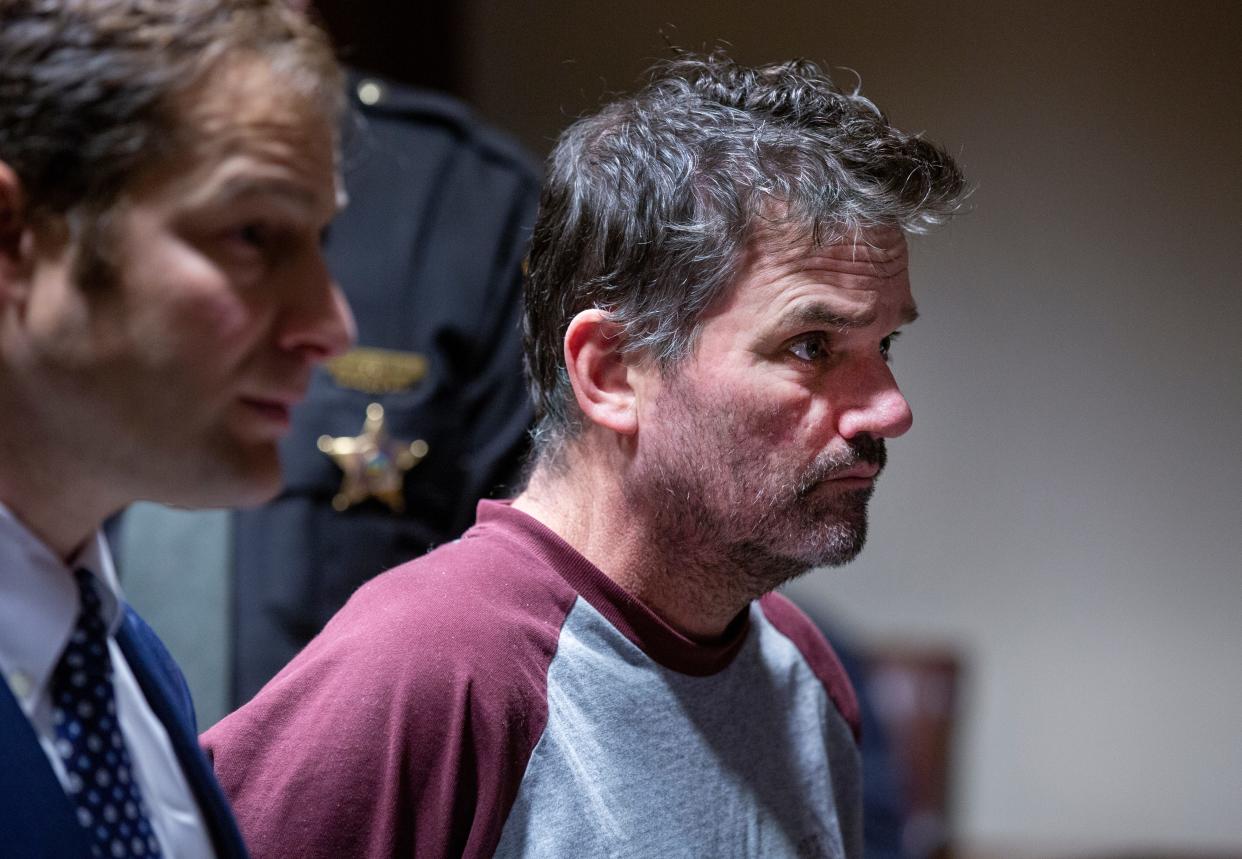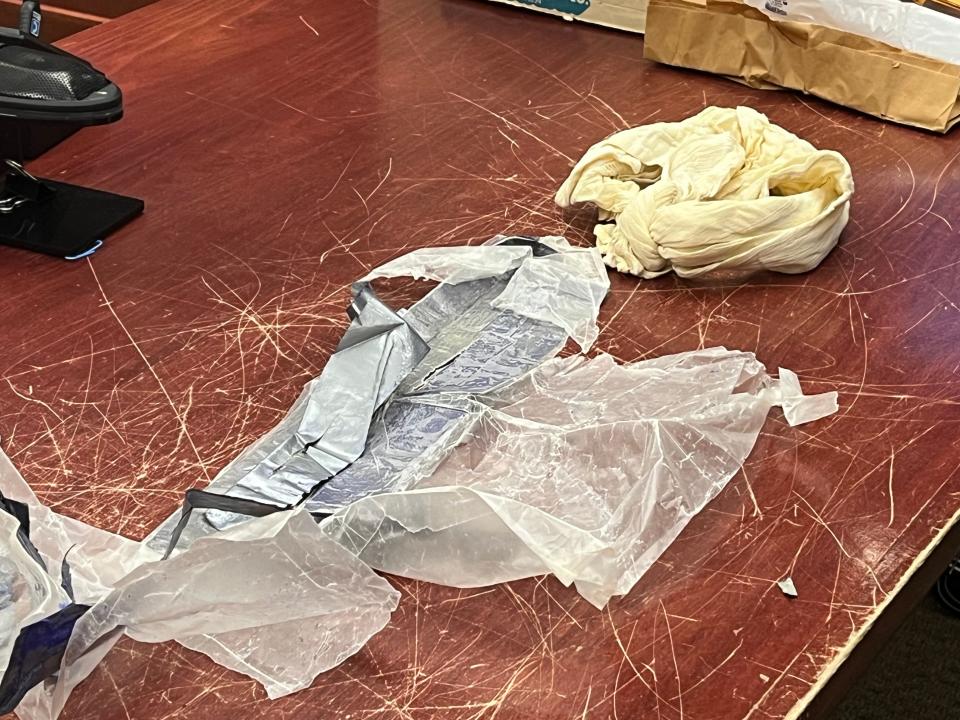Serial rapist who kept 'child bride' gets decades-long prison sentence for NKY assaults

Over at least three decades, prosecutors say, William Blankenship stalked and terrorized women and young girls in Hamilton and Campbell counties by breaking into their homes and forcibly raping them.
Blankenship, 59, was sentenced on Wednesday in Campbell County Circuit Court to 50 years in prison, with some of that time running concurrently with a 19-year sentence he is serving in Ohio.
In exchange for his January guilty plea, prosecutors agreed to dismiss six other counts Blankenship was facing as part of a 26-count indictment returned in July 2021.
Those counts were related to the forced sexual assaults of three women and two juvenile girls between the late 1980s and 2000s in Fort Thomas and Southgate.
His attacks followed a pattern, prosecutors said. Blankenship often blindfolded and bound his victims, told them he’d been surveilling them and acted as though he was engaging in consensual sex with them, expressing concern for their wellbeing.
“He is the monster of our nightmares,” said Campbell County Commonwealth’s Attorney Michelle Snodgrass.
During the hearing, Snodgrass held up a still knotted blindfold, hair still caught in it, a piece of evidence from one of Blankenship’s rapes that had been boxed up since the late '80s.

Blankenship apologized to his victims, some of whom were sitting in court, while being sentenced before Judge Julie Reinhardt Ward.
While the earliest rape Blankenship is convicted of happened in 1987, prosecutors believe his crimes began much earlier and that he likely has other victims.
“We know there's more,” Snodgrass said. “So we were fighting for all of them through this process.”
Blankenship had an illegal, decade-long relationship with ‘child bride’
In addition to the forced rapes, Blankenship had also been in a decade-long, illegal sexual relationship with a young teenage girl.
That relationship began in 1989 when the girl was newly 13 years old, prosecutors said, adding they met while Blankenship was stalking the streets of Bellevue and Dayton searching for minor victims.
The girl was an easy target, prosecutors said in court filings, because she was from a broken home and had no one in her life to stop her from living with Blankenship as some sort of “child bride.”
The relationship wasn’t a secret either, as Blankenship’s family lived with them and they knew each other’s friends. She even had the then 30-year-old Blankenship on her arm while at her Highlands High School prom.
More: Racist Facebook comments become key issue in Northern Kentucky death penalty case
However, prosecutors said, Blankenship largely kept the girl under his thumb, isolating her in their home, withholding financial freedom and limiting her contact with the outside world.
While their relationship was ongoing, Blankenship stopped “burglarizing the homes of women and young females in order to satiate his abominable sexual proclivities,” prosecutors wrote in court filings.
Around the spring of 1999, when their relationship ended, Blankenship raped two juvenile sisters at their home in Fort Thomas, where they lived with their disabled father.
One of those sisters later identified Blankenship as her rapist in a photo lineup in 2020.
How was Blankenship finally caught?
Over the years, Blankenship had close calls with law enforcement, including when one of his victims recognized his voice while eating at a local restaurant just days after she was attacked.
However, it wasn’t until investigators started testing DNA contained in decades-old rape kits that Blankenship was identified as a suspect in the rapes of two young girls and a woman between 1999 and 2001 in Hamilton County.
He was convicted and sentenced for those rapes early last year.
Using the Y chromosome in that DNA – which passes down paternally – detectives reached out to a genealogy website to trace the DNA to Blankenship's family.
By tracking the DNA back to that family, investigators obtained a search warrant and tested Blankenship directly.
While incarcerated for the Hamilton County charges, Blankenship expressed concerns about possible charges in Northern Kentucky.
His statements led detectives to revisit unsolved rapes, leading them to Blankenship’s victims in Campbell County, according to prosecutors.
Some of the evidence collected by investigators in Northern Kentucky included identifications from victims, DNA and even an FBI profiler’s assessment which tied two of the rapes together based on the similarities of how the crimes were committed.
Fort Thomas police Detective Brandon Vance credited the investigators who first worked on these cases, saying the evidence they collected was crucial in solving the crimes decades later.
“If it wasn't for their groundwork and how they settled everything and how they put everything together, we wouldn't be here today,” Vance said.
This article originally appeared on Cincinnati Enquirer: Serial rapist William Blankenship who kept 'child bride' gets prison

